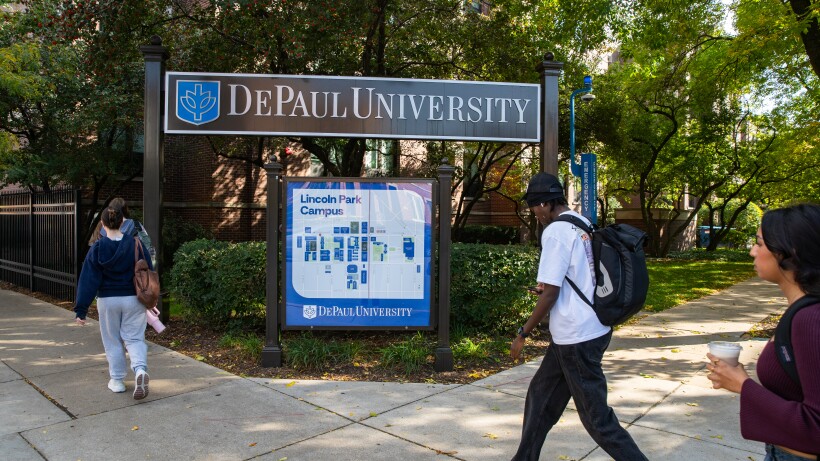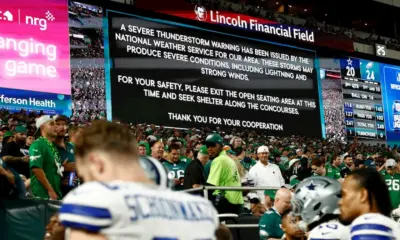Education
Decline in International Students Strains Illinois Universities

International student enrollment at several universities in Illinois has significantly decreased this academic year, raising concerns about financial stability and academic collaboration. Early data indicates a downward trend across institutions such as DePaul University, the University of Illinois Chicago, and the University of Illinois Urbana-Champaign. The drop comes amid federal efforts to reduce the number of foreign students on American campuses.
At DePaul University, approximately 750 fewer international students are enrolled this fall compared to the previous year. In a recent communication, DePaul President Robert Manuel noted that new graduate student enrollment from abroad has plummeted by nearly 62%. Manuel expressed deep concerns about the implications of this decline, stating, “Significant shifts in the higher education landscape continue to create a palpable sense of fear and anxiety in our community.”
Financial Impact and Academic Concerns
The reduction in international students is not merely a statistic; it directly impacts university finances. Students from abroad contribute significantly more in tuition compared to their domestic counterparts. At the University of Illinois Urbana-Champaign, for instance, an international undergraduate engineering student faces costs nearing $70,000 annually, while an in-state student pays just over $42,000. As Illinois has decreased taxpayer funding for public universities, reliance on international student tuition has grown.
Faculty members have voiced concerns about the broader implications of this trend. Leslie Harris, a professor at Northwestern University, highlighted the importance of international collaboration in research and education. “Much of the work that academics and particularly scientists do is international,” she noted, emphasizing that many global issues transcend national boundaries.
The decrease in international enrollment at the University of Illinois Chicago stands at 4.9%, primarily affecting graduate student numbers. The University of Illinois Urbana-Champaign reported a decline in international graduate students as well, although the number of foreign undergraduate students has increased slightly. Overall, UIUC enrolled 13,268 international students this fall, representing 45% undergraduates and 55% graduate students.
Broader Context and Future Outlook
The situation reflects a nationwide trend. According to the Institute of International Education, there is a projected 30% to 40% decline in new international students across the United States for the current academic year. This could lead to a 15% drop in overall enrollment, translating to a staggering $7 billion loss in revenue and over 60,000 fewer jobs.
Federal policy changes have contributed to this decline, including slowdowns in student visa processing and proposals to limit international student enrollment. In March 2024, the Trump administration suggested that universities could receive priority funding if they capped international student enrollment at 15%. Such measures, coupled with recent immigration enforcement actions, have created an environment that discourages foreign students from choosing American institutions.
Students currently studying in the U.S. have expressed their apprehensions. Micol Bez, a PhD candidate at Northwestern, remarked on the perception of safety for international students, stating, “The perception of these schools is that international students will not be safe.” She highlighted that if she were to recommend study options to others, the U.S. would not be a top choice.
As universities grapple with these challenges, many are considering immediate budgetary cuts. Options being discussed include freezing staff hiring and reducing executive pay. The continuing decline in international student enrollment poses significant challenges not only to individual institutions but also to the broader landscape of American higher education.
-

 Technology4 months ago
Technology4 months agoDiscover the Top 10 Calorie Counting Apps of 2025
-

 Health2 months ago
Health2 months agoBella Hadid Shares Health Update After Treatment for Lyme Disease
-

 Health3 months ago
Health3 months agoErin Bates Shares Recovery Update Following Sepsis Complications
-

 Technology4 weeks ago
Technology4 weeks agoDiscover 2025’s Top GPUs for Exceptional 4K Gaming Performance
-

 Technology2 months ago
Technology2 months agoElectric Moto Influencer Surronster Arrested in Tijuana
-

 Technology4 months ago
Technology4 months agoDiscover How to Reverse Image Search Using ChatGPT Effortlessly
-

 Technology4 months ago
Technology4 months agoMeta Initiates $60B AI Data Center Expansion, Starting in Ohio
-

 Technology4 months ago
Technology4 months agoRecovering a Suspended TikTok Account: A Step-by-Step Guide
-

 Health4 months ago
Health4 months agoTested: Rab Firewall Mountain Jacket Survives Harsh Conditions
-

 Lifestyle4 months ago
Lifestyle4 months agoBelton Family Reunites After Daughter Survives Hill Country Floods
-

 Technology3 months ago
Technology3 months agoUncovering the Top Five Most Challenging Motorcycles to Ride
-

 Technology4 months ago
Technology4 months agoHarmonic Launches AI Chatbot App to Transform Mathematical Reasoning


















